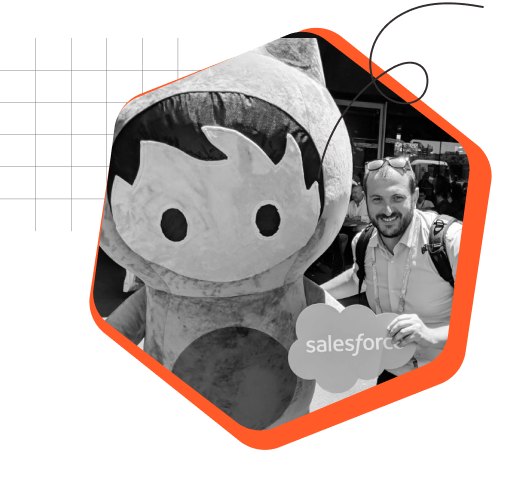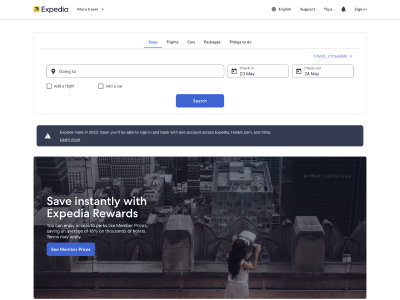About the client
Salesforce is a global, cloud-based, customer relationship management (CRM) business. Its product offering also includes applications for customer service, marketing automation, analytics, and application development. Their mission is to bring companies and customers together, and they do so by uniting teams within businesses so that they can use the one platform to provide quality customer service.
Despite this mission, in 2017-2018, Salesforce was seeing declining conversion rates alongside traffic that was almost at saturation. At the same time, they were being challenged to bring in more and more leads. They urgently needed help aligning their digital marketing efforts with their KPIs and In Marketing We Trust was engaged to make this happen!
Challenge
More leads were needed despite sustained drops in conversion rates and traffic saturation
Increasing KPIs put pressure on teams to perform
The team at Salesforce were being asked to deliver increasingly larger numbers of leads, which was difficult to do given traffic to their sites was reaching a saturation point. In addition to this, lead generation via paid channels was expensive, with Cost Per Click (CPC) sitting around $40, so it was important to ensure that the landing page they ended up on was engaging and helped drive conversion.
Limited access to in-house experts for the regional APAC team meant they were unsure how to make progress
Salesforce didn’t have a local expert CRO team internally, and had limited support from HQ or other larger markets; therefore weren’t sure how to fix the issues they were seeing as they didn’t understand how to make the changes that were needed to turn lead generation around.
With our research, it became clear that potential customers had low maturity and needed to understand CRM products if they were going to convert, so we were able to create a strategy to counter this.
Getting past the winning test and moving into implementation.
On carrying out our work, we found that it wasn’t as simple as a test being successful and automatically being put into practice across the site for all users to benefit from. Approval needed to be gained from the product owner and time booked with the development team to get these changes live on site – and this was not a simple process as marketing had traditionally been working in a silo.
Solution
Creating a roadmap and executing on a data-led plan with experiments turned things around, quickly!
Understanding the needs of the business
The first thing we did was immerse ourselves in the Salesforce business.
Something we see often is that our clients are so deeply immersed in their day-to-day tasks that they aren’t able to look at the bigger picture. We were able to come in and provide an objective view and conduct research that helped Salesforce to better understand their potential customers and their needs, and then deliver on a strategy that worked to turn those potentials into customers.
Combining these needs with those of the potential customers
We combined the findings of our research (see details below) with the requirements of the Salesforce team to create a strategy and execution plan that met the needs of the business and the potential customers they were trying to attract.
We pride ourselves on the fact that we act as part of the team when we undertake large projects, and Salesforce was no different. We don’t want to be seen as an external resource. Instead we aim to become a member of the team. This allows us to build trust and increases visibility so that we can champion the marketing team and the important work that is being done.
How we approached the solution
Our expert team at In Marketing We Trust worked with Salesforce for 18 months to help turn around their CRO issues, along with providing SEO and analytics support.
From a research perspective, there were many different things that we did to ensure we understood the needs of the potential Salesforce customer, including:
- Undertaking a heuristic evaluation – with a 230 point checklist and expert review to find usability issues, and identification of weak areas on the site
- Conducting qualitative research – question polls (on site) and customer surveys to better understand visitors – their motivations and fears, what would they like to see, why they leave without enquiring, what information they couldn’t find
- Running user testing (with real people) – to gain a sense of how they navigated through the site
- Reviewing analytics – identifying quick fix pages, finding out what people search for on site
- Examining user behaviour tools – movemaps, clickmaps, and scrollmaps, plus session recordings
- Resolving technical issues that could be preventing direct conversions or impacting UX
- Undertaking other research including reviewing customer service logs, customer journey analysis, and more
Our team then took all of this information and used it to formulate a range of hypotheses that could then be tested, and if found to be true, added to the website on a more permanent basis. An example of a hypothesis that was tested for Salesforce was:
Prospects are reluctant to give their time and information without really knowing what they will get back in return. Showing them video teasers will increase the volume of qualified leads captured by the form.
We could see that most traffic was hitting the book a demo page, but it wasn’t converting. Combining this information with the fact that mobile traffic was high, and the demographic was of an age that often doesn’t like completing forms, we suggested that an option be added to allow the user to call Salesforce directly from the page instead.
Rapid results to build trust and engagement
We were aware that quick results were needed – but that UX takes time to do properly – so we turned on A/B testing almost immediately so that we could show some quick positive results and engage the Salesforce business from the get-go.
In the longer term, we created a decision tree to help users decide which offering was right for them, redesigned key pages for higher engagement, and educated visitors on what a CRM is (a vital piece of information that was later run as a standalone campaign through offline channels).
Sometimes, the most important impact we have is helping clients understand that iterative changes often lead to the biggest results long term. A sustained 6% improvement month-on-month doubles your performance in 12 months.
Results
Increased engagement, leads, and ROI were made possible, within a short timeframe
By changing the content on the key landing page and enabling mobile users to call rather than complete a form, we were able to show an increase in engagement on mobile and conversion tripled.
Between August and October 2018, the In Marketing We Trust team increased new leads by 28 per cent (YoY for overall form completions) and visits by 39 per cent YoY (exceeding the 20 per cent target they were given by Salesforce).
We exceeded India’s target by more than 58 per cent for the period between May and October, while Australia had 18 per cent growth over the same timeframe.
ROI of 411 per cent was achieved within the first 6 months – based on a $50,000 spend and a forecast of >$200,000 revenue off the back of the results of three experiments.
ROI in first 6 months
mobile conversion rate improvement
YoY increase in leads




